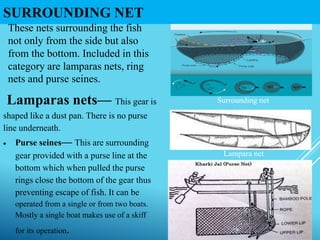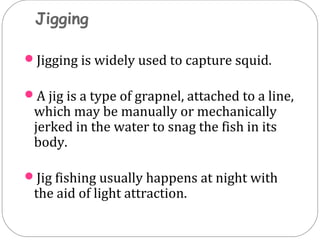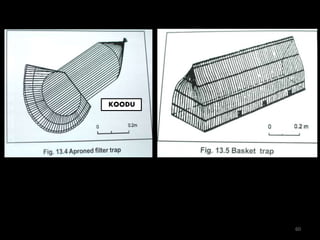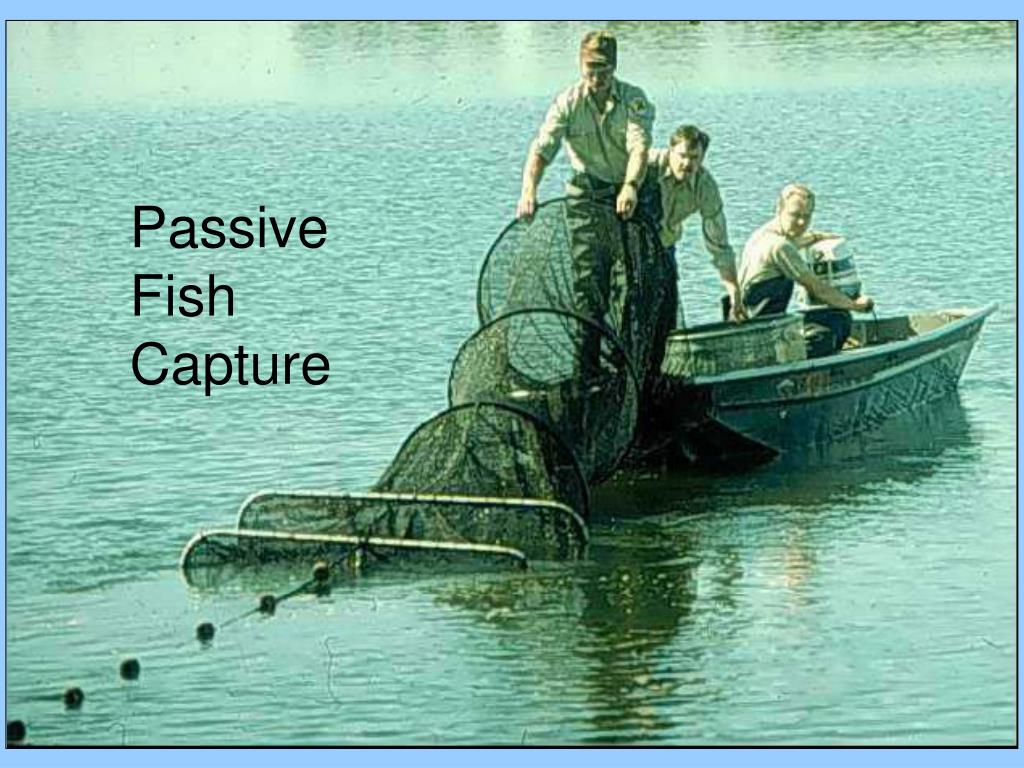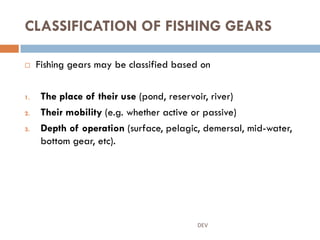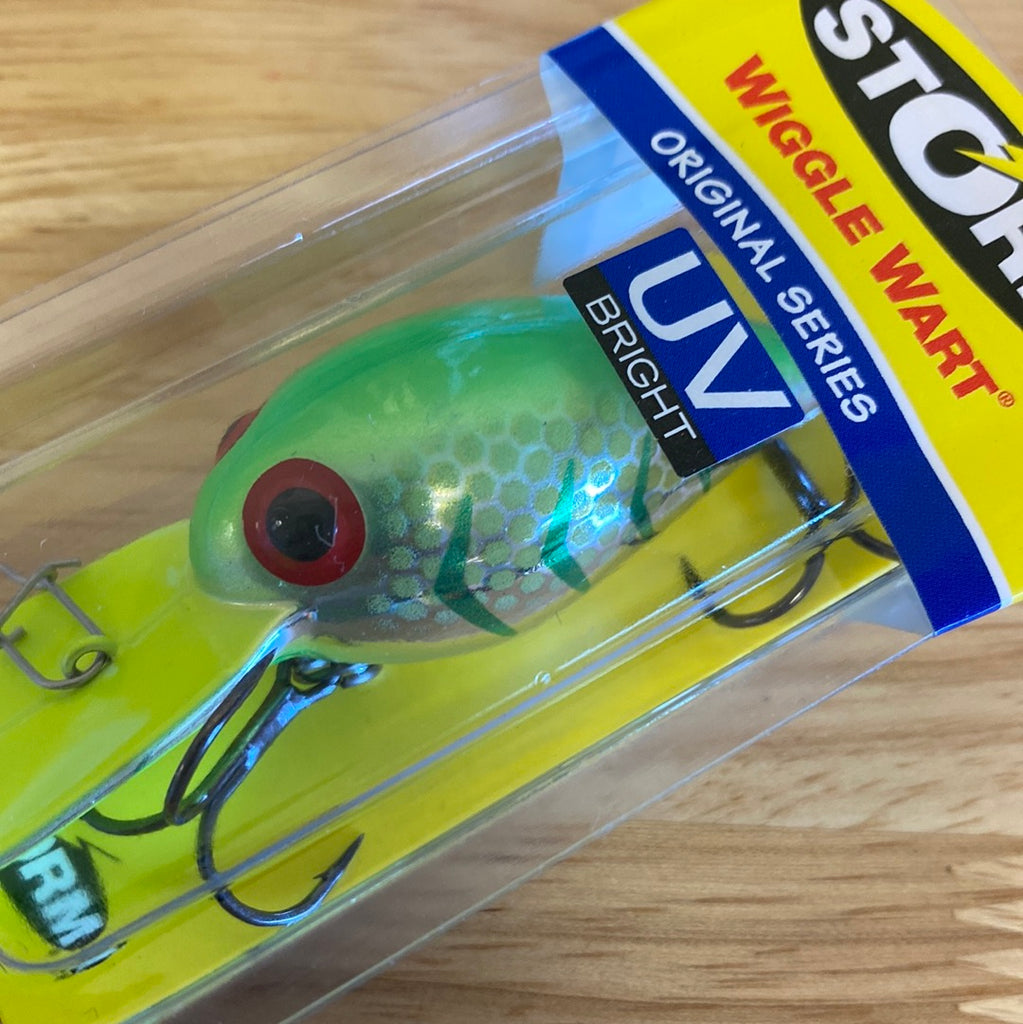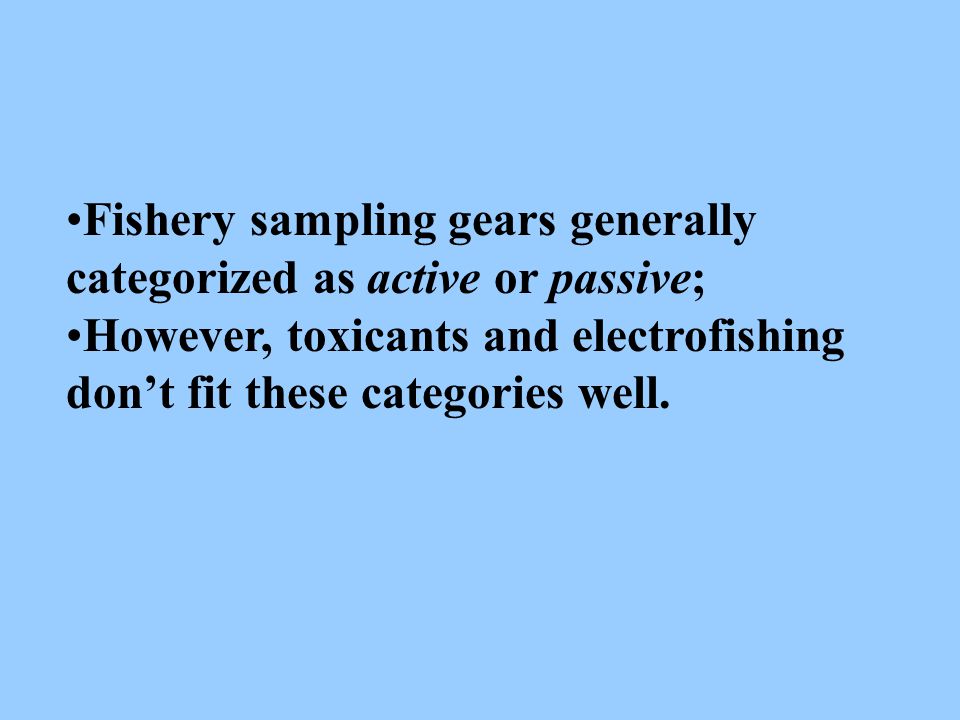
Passive Fish Capture. - ppt video online download
Fishery sampling gears generally categorized as active or passive; However, toxicants and electrofishing don’t fit these categories well.
• Passive: gear is relatively stationary, and fish come to gear. • Entanglement: they get tangled.
-- simple design and construction. -- relatively low cost. -- require little specialized training.
(catch-per-unit-effort) should be directly proportional to. the abundance of fish in the populations. Thus CPUE is an INDEX to abundance. 0 2,000 4,000 6,000 8,000 10,00012, Population density.
-- rely on fish activity. -- may damage bycatch. -- can be selective for species, size, sex (more on this later)
Most common example probably is the gill net
panels of various mesh sizes. Examples: 6 panels , 0.75, 1.0, 1.5, 2.0, 2.5 in (bar measure)
stretch mesh (2X) }bar mesh
• Monofilament gill nets typically catch. more fish. • Size structure similar between net types for most species. • Monofilament nets easier to run.
• Gill nets most effective on fusiform (torpedo-shaped) fishes such as Northern Pike, Walleye, Yellow Perch, trout and salmon, etc. • Largemouth Bass avoid gill nets.
- Fish behavior (e.g., spawning) - Often highest in spring/fall and. lower in summer MAY JUN JUL AUG SEP OCT.
• However, sampling can still be justified. • Most biologists prefer to use most benign gear that is still effective.
the middle panel is small mesh. Thus, the. fish get caught in a bag.
• Target species: catfishes, catostomids, Common Carp.
Experimental Gill Net Case Study
Length frequency for a sample of yellow perch (YEP) collected with experimental gill nets from a natural lake in the northern United States during the spring. All length measurements were maximum total length..
• Entrapment: fish typically retained by some type of funnel • Trap (modified fyke) nets, and. • Hoop nets most commonly used.
• Most effective on species that seek cover, such as crappies and sunfishes. • Often effective for collection of spawning Northern Pike or walleye. • Largemouth bass avoid trap nets.
• Often used in flowing waters; often baited. • Catfishes. • Suckers: buffalo fishes, carpsuckers. • Crappies and sunfishes.
Considerations • Both trap and hoop nets inflict little mortality; most fishes can be released alive.
- equipped w/funnels to prevent escape. - used for bottom-dwelling or cavity-seeking spp. - commonly baited. - often fished in large numbers.
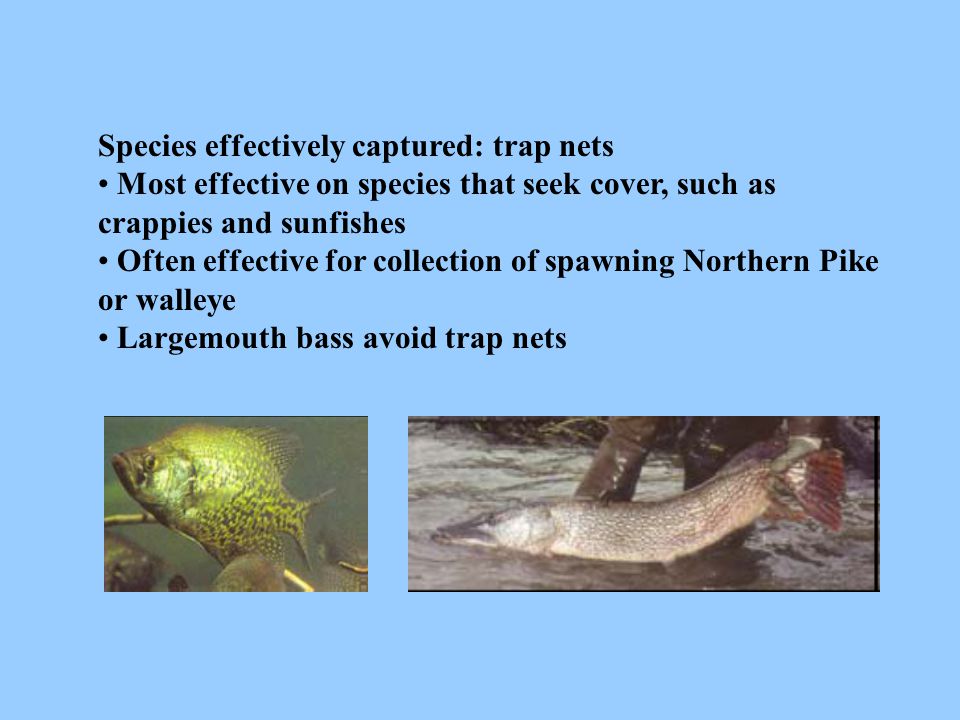
Passive Fish Capture. - ppt video online download

Sights and sounds of dolphins, Tursiops truncatus, preying on native fish of San Diego Bay and offshore in the Pacific Ocean
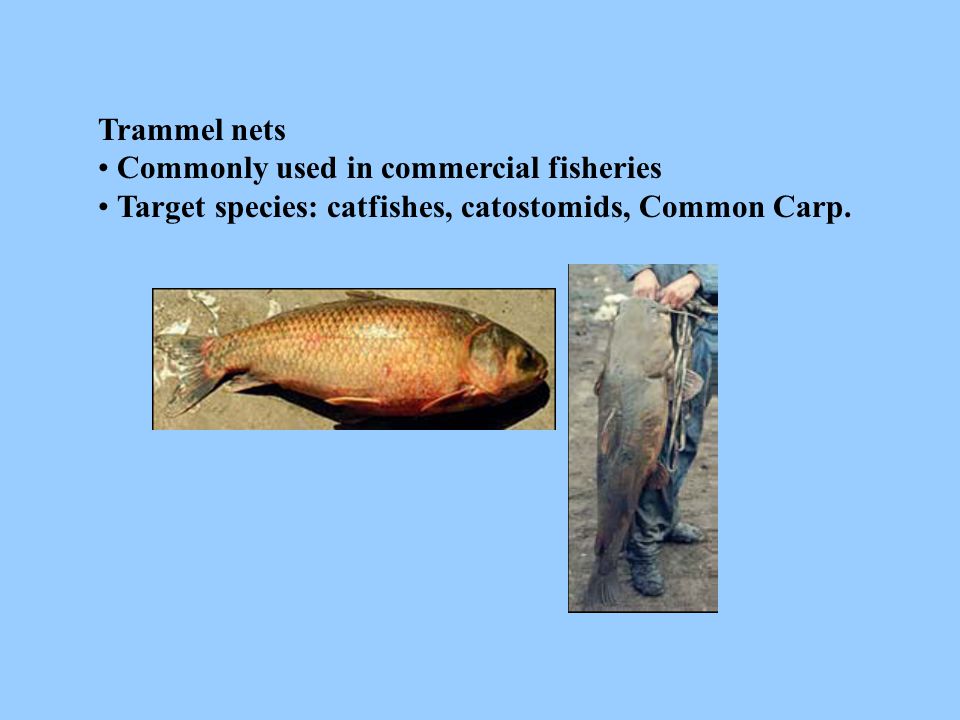
Passive Fish Capture. - ppt video online download

Destructive fishing” – a ubiquitously used but vague term? Usage and impacts across academic research, media, and policy

PPT - Passive Fish Capture PowerPoint Presentation, free download - ID:203331
EEC 100 Lab 06 - Active Bandpass Filter - University of California, Davis

Chapter 6 Passive Capture Techniques. Fish caught by –Entanglement –Entrapment –Angling gears Gear is not moved through the water. - ppt download

Current Principles of Motor Control, with Special Reference to Vertebrate Locomotion

Pattern detection and prediction using deep learning for intelligent decision support to identify fish behaviour in aquaculture - ScienceDirect

PPT - Passive Fish Capture PowerPoint Presentation, free download - ID:203331

Passive Capture Techniques Fish Harvest and Movement. - ppt download
